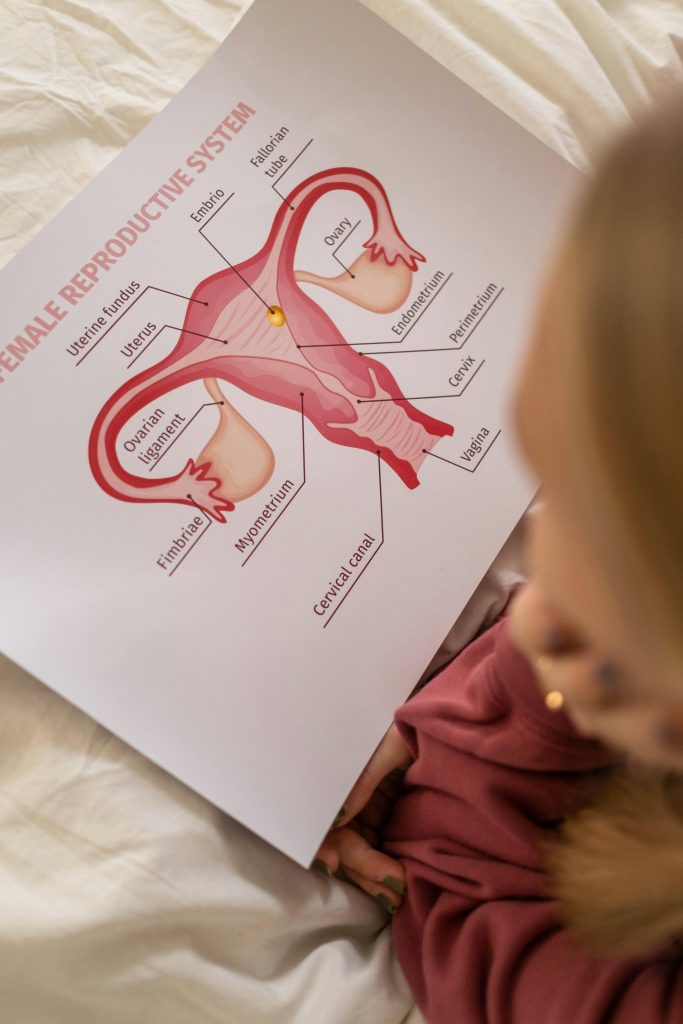Polycystic ovary syndrome (PCOS) is one of the most common hormonal disorders in women of reproductive age. It is a systemic imbalance in which the ovaries produce too many androgens (male hormones). These begin to dominate, interfering with normal egg maturation. Ovulation is disrupted, and immature follicles accumulate on the surface of the ovaries.

PCOS affects the menstrual cycle and fertility, impacts metabolism, skin condition, mood, energy levels, and even cardiovascular function.
Talking about PCOS is important – millions of women around the world live with this syndrome without knowing it. Their symptoms are dismissed, and complaints are attributed to stress, age, or “everyone has that.” Open discussion about PCOS is a step toward early diagnosis, self-care, and systemic attention to women’s health.
Global statistics: what WHO and 2025 research say
According to international studies and the WHO report for 2025, PCOS affects millions of women but often remains undiagnosed.
- WHO data shows that up to 70% of PCOS cases go undetected.
- On average, 8% to 13% of women of reproductive age live with PCOS.
- In regions with high rates of insulin resistance and obesity (South Asia, the Middle East, Latin America), prevalence reaches 20%.
- Even in countries with advanced healthcare systems, diagnosis is often delayed due to vague symptoms and lack of awareness.
Lack of early diagnosis leads to complications: infertility, type II diabetes, depression, cardiovascular risks.
WHO emphasizes the need to integrate women’s reproductive health into primary care. It also calls for training specialists, improving access to screenings, and reducing stigma around hormonal disorders.
Causes of PCOS – what triggers the condition
Genetic predisposition plays a key role in the development of this condition: if a mother, sister, or grandmother had irregular cycles, acne, or difficulty conceiving, the risk increases. This doesn’t mean direct inheritance, but such women are more likely to experience hormonal imbalances.
Insulin (a hormone that regulates blood sugar) is also involved in women’s health. In many women with PCOS symptoms, cells lose sensitivity to insulin, and the body begins to produce it in excess. This stimulates the ovaries to produce androgens, disrupting ovulation and intensifying symptoms. Insulin resistance can occur even in women with normal weight.

Chronic inflammation is another contributing factor. It disrupts hormonal regulation and worsens insulin resistance. Dysfunctions in the hypothalamic-pituitary axis (the system that controls production of follicle-stimulating and luteinizing hormones – regulating ovarian function and the menstrual cycle) lead to excess androgens and ovulation failure.
PCOS is not the result of poor lifestyle choices. It is a systemic condition that requires understanding, gentle care, and individualized support.
PCOS and reproductive health – symptoms and consequences
Polycystic ovary syndrome manifests through many physical and emotional signals. Some are obvious, others are masked as normal or attributed to stress.
Here are the key symptoms to recognize:
- Menstrual irregularities. The cycle becomes irregular, lengthens, or disappears entirely. Ovulation is rare or absent, affecting fertility and hormonal balance.
- Hirsutism (excess hair growth). Hair begins to grow in areas typical of male hormone patterns – above the upper lip, on the chin, chest, abdomen. This is linked to excess androgens and can cause discomfort, lower self-esteem, and a desire to hide.
- Acne and oily skin. Breakouts, especially on the lower face, may be resistant to cosmetic treatments. Skin becomes oilier, pores enlarge—reflecting internal hormonal imbalance.
- Weight gain. Body weight increases, especially around the abdomen, even with balanced nutrition. This is linked to insulin resistance and metabolic disruption.
- Psycho-emotional symptoms. Anxiety, mood swings, chronic fatigue, and reduced libido are common companions of PCOS.
A woman may spend years visiting cosmetologists, nutritionists, and therapists without knowing that all these symptoms stem from a single hormonal mechanism. PCOS directly affects reproductive health. Ovulation disorders make conception difficult or impossible.
Diagnosis: how not to get lost in tests
Diagnosing PCOS requires a comprehensive evaluation, attention to detail, and understanding that symptoms may be vague and presentations atypical.

First, a pelvic ultrasound is performed. It reveals a characteristic pattern: multiple small follicles around the ovary’s edge, resembling a string of pearls. But it’s important to note: the presence of such follicles alone does not confirm PCOS – it must be combined with other signs.
Hormonal tests are also ordered: levels of testosterone, follicle-stimulating and luteinizing hormones, prolactin, and estradiol. PCOS often shows elevated androgens and imbalance in female hormones. Insulin and fasting glucose are also checked to detect hidden insulin resistance.
Why isn’t the diagnosis made immediately? Because PCOS is a syndrome, not a single disease. It can present in various ways. A specialist must rule out other causes, collect medical history, compare test results, and only then make a diagnosis.
PCOS prevention that should become the norm
PCOS shouldn’t be feared. It’s something worth knowing about to support yourself in time. Before symptoms appear, much can be done: improve nutrition, reduce inflammation, and strengthen insulin sensitivity. Moderate physical activity (even simple walking or dancing) helps stabilize hormonal balance. Balanced nutrition focusing on complex carbohydrates, proteins, and healthy fats reduces the risk of metabolic disorders.
For women who fear PCOS, it’s important to understand: it’s a manageable condition. Early monitoring, regular cycles, tracking mood and skin condition help detect changes in time. And for those not yet concerned, prevention is simply self-care without pressure.
If symptoms have already appeared, various support strategies are possible. Hormonal therapy helps stabilize the cycle and reduce androgen levels. Metformin is used for insulin resistance. Cosmetic support is also important, as it affects self-esteem and quality of life.
The key is an individualized approach. Each woman has her own goals: restoring the cycle, improving well-being, preparing for pregnancy. Age, symptoms, and lifestyle must be considered when choosing a strategy.

PCOS is not a sentence or a reason to fear your body
Polycystic ovary syndrome is a signal that hormonal balance is disrupted and the body needs support. A regular cycle, stable mood, and clear skin are visible indicators of health. And if something is wrong, it’s important not to ignore symptoms, not to feel ashamed of changes, and not to wait until things get worse.


